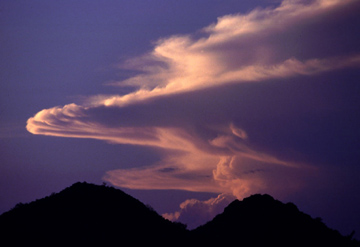300813monsoon.jpg

Monsoon thunderstorm over Arizona Credit: National Oceanic and Atmospheric Administration
Summer is the hottest, driest part of the year for most of the United States. But that’s not the case for parts of the desert southwest. It’s hot all right, but it’s also the wettest time of year. Areas from southern Arizona to western Texas can get half of their annual rainfall in just a couple of months.
The rains are brought by the North American Monsoon — a complex interplay of oceans, land, and air that’s similar to the more famous monsoon in India.
For most of the year, the deserts of northwestern Mexico and the southwestern United States are swept by dry winds from the north and west. But beginning in late May, things change. A large high-pressure system moves northward from the tropics. And the extra sunlight heats the desert, which creates low pressure. The combination changes the winds, so they blow from the south.
The winds bring in moisture from the Pacific Ocean, the Gulf of California, and the Gulf of Mexico, triggering rains. They begin around the first of June in parts of Mexico, then work their way into the U.S. in early July.
The rains are heaviest in Mexico, where some regions can get up to a foot per month. In places, that transforms deserts into rainforests in a matter of weeks. There’s less rain in the United States, which takes the form of afternoon and evening thunderstorms.
By early September, the winds begin to change back around to the north and west, and the monsoon comes to an end — after another season of beneficial rainfall across the desert southwest.
This episode of Science and the Sea was made possible by Texas Sea Grant.

